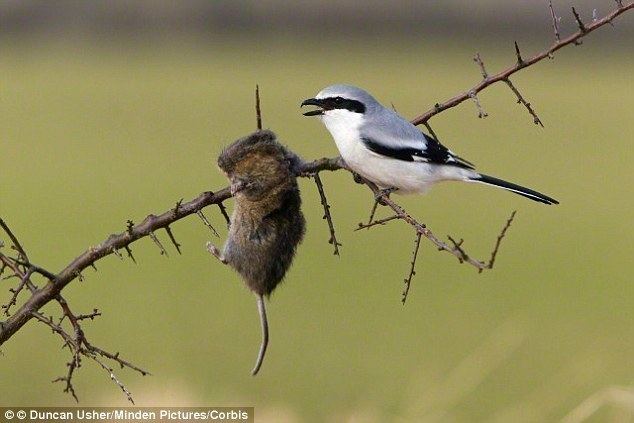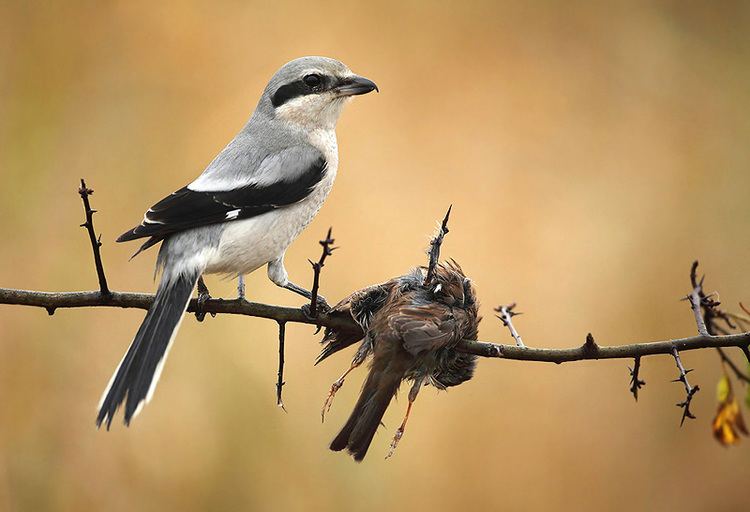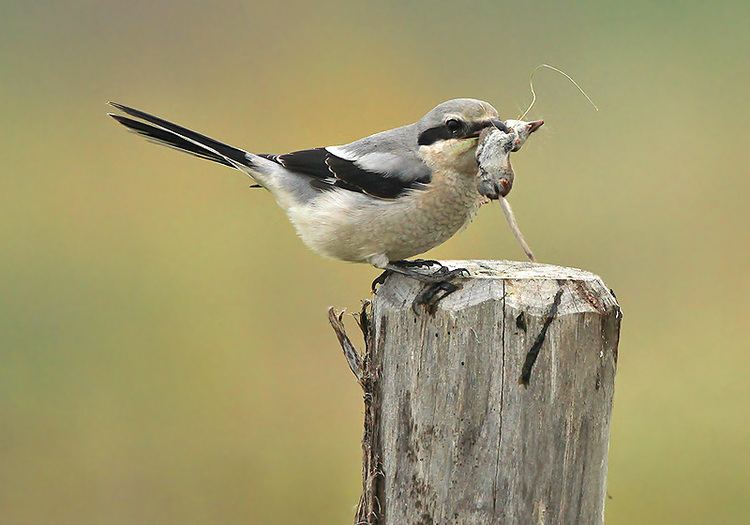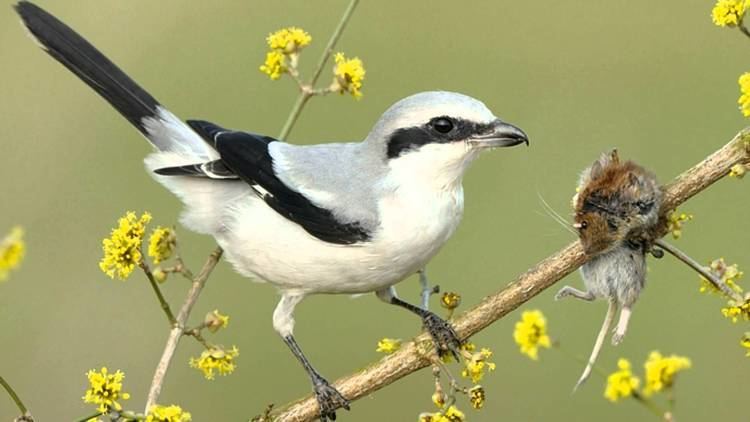Scientific name Laniidae Phylum Chordata Order Passerine | Suborder Passeri Higher classification Passerine Rank Family | |
 | ||
Lower classifications Lanius, Great grey shrike, Red‑backed shrike, Bull‑headed shrike, Yellow‑billed shrike | ||
Tiny vicious killer of the bird world shrike impales its victims on a spike
Shrikes (/ʃraɪk/) are carnivorous passerine birds of the family Laniidae. The family is composed of thirty-one species in four genera. They are fairly closely related to the bush-shrike family Malaconotidae.
Contents
- Tiny vicious killer of the bird world shrike impales its victims on a spike
- A snake vs a shrike bird
- Distribution migration and habitat
- Description
- Behaviour
- Breeding
- Species in taxonomic order
- Birds with similar names
- References

The family name, and that of the largest genus, Lanius, is derived from the Latin word for "butcher", and some shrikes are also known as "butcher birds" because of their feeding habits. The common English name "shrike" is from Old English scríc , "shriek", referring to the shrill call.

A snake vs a shrike bird
Distribution, migration and habitat

Most shrike species have a Eurasian and African distribution, with just two breeding in North America (the loggerhead and great grey shrikes). There are no members of this family in South America or Australia, although one species reaches New Guinea. The shrikes vary in the extent of their ranges, with some species like the great grey shrike ranging across the Northern Hemisphere to the Newton's fiscal which is restricted to the island of São Tomé.

They inhabit open habitats, especially steppe and savannah. A few species of shrike are forest dwellers, seldom occurring in open habitats. Some species breed in northern latitudes during the summer, then migrate to warmer climes for the winter.
Description

Shrikes are medium-sized birds, up to 50 centimetres (20 in) in length, with grey, brown, or black and white plumage. Their beaks are hooked, like that of a bird of prey, reflecting their predatory nature, and their calls are strident.
Behaviour
Shrikes are known for their habit of catching insects and small vertebrates and impaling their bodies on thorns, the spikes on barbed-wire fences, or any available sharp point. This helps them to tear the flesh into smaller, more conveniently-sized fragments, and serves as a cache so that the shrike can return to the uneaten portions at a later time. This same behaviour of impaling insects serves as an adaptation to eating the toxic lubber grasshopper, Romalea guttata. The bird waits for 1–2 days for the toxins within the grasshopper to degrade, and then can eat it.
Shrikes are territorial, and these territories are defended from other pairs. In migratory species a breeding territory is defended in the breeding grounds and a smaller feeding territory is established during migration and in the wintering grounds. Where several species of shrike exist together, competition for territories can be intense.
Shrikes make regular use of exposed perch sites, where they adopt a conspicuous upright stance. These sites are used in order to watch for prey items and to advertise their presence to rivals.
Breeding
The shrikes are generally monogamous breeders, although polygyny has been recorded in some species. Co-operative breeding, where younger birds help their parents raise the next generation of young, has been recorded in both species in the genera Eurocephalus and Corvinella as well as one species of Lanius. Males attract females to their territory with well stocked caches, which may include inedible but brightly coloured items. During courtship the male will perform a ritualised dance which includes actions that mimic the skewering of prey on thorns and will feed the female. Shrikes make simple, cup-shaped nests from twigs and grasses, in bushes and the lower branches of trees.
Species in taxonomic order
The family Laniidae was introduced (as Lanidia) by the French polymath Constantine Samuel Rafinesque in 1815.
FAMILY: LANIIDAE
Birds with similar names
Other species, popularly called shrikes, are in the families:
The Prionopidae and Malaconotidae are quite closely related to the Laniidae, and were formerly included in the shrike family. The cuckoo-shrikes are not closely related to the true shrikes.
The Australasian butcherbirds are not shrikes, although they occupy a similar ecological niche.
